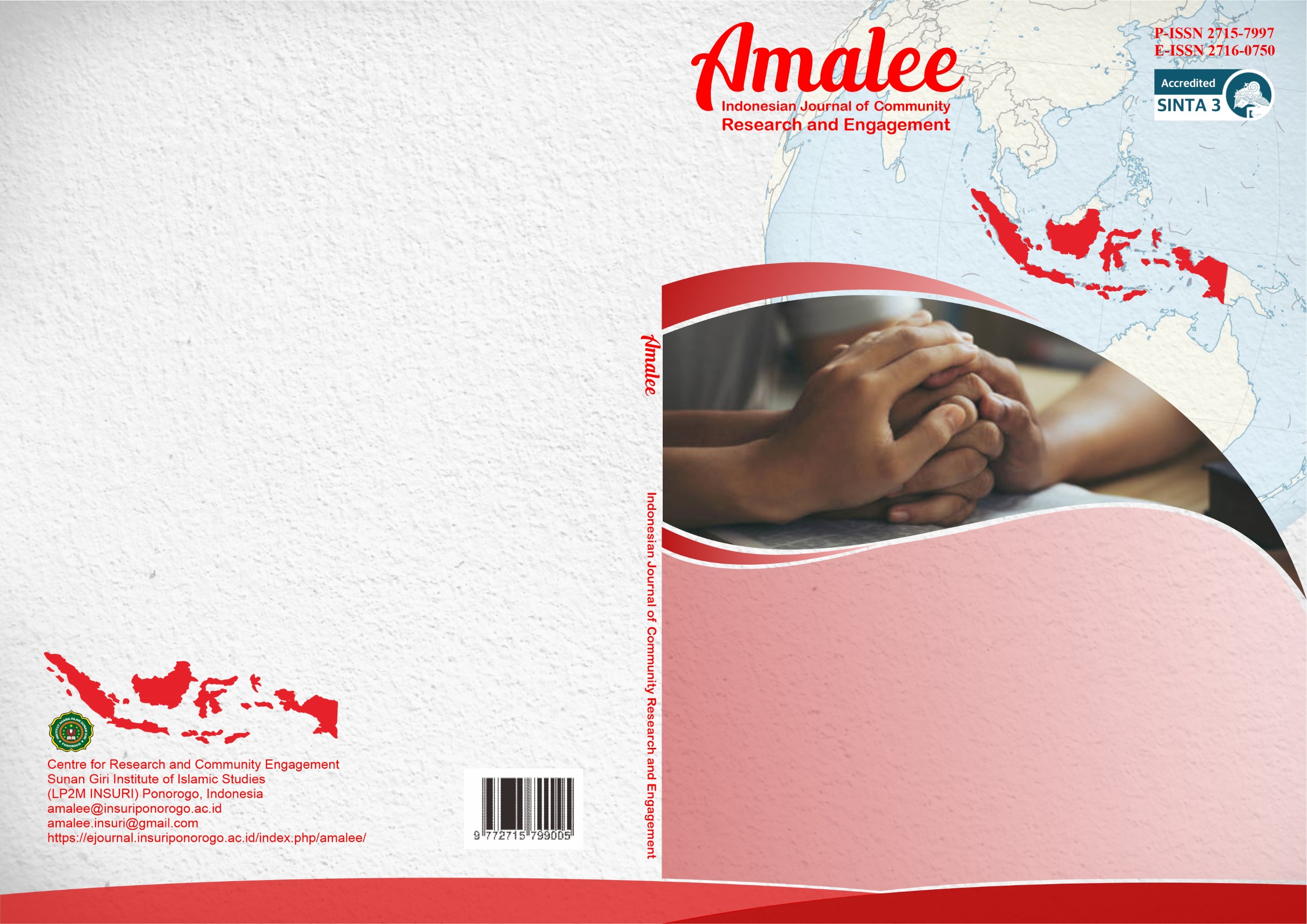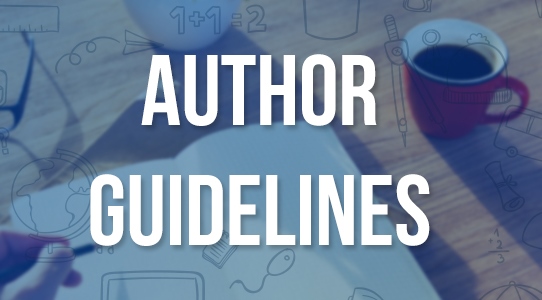Utilization of NTT-Weave Waste for Pastors to Improve Community Economy in Kupang Regency
DOI:
https://doi.org/10.37680/amalee.v5i2.4810Keywords:
Accessories, NTT Weave, Pastor, Waste PatchworkAbstract
The remains of NTT woven fabrics are generally thrown away and not utilized by the community in Kupang Regency. Reusing these remains into various accessories has many uses, which shows that the remains can play a good role if managed in products with a selling value. The purpose of this community service is to improve the skills of pastors in utilizing waste cloth into accessories that have high selling value so that they can pass on this knowledge to the congregation, hoping to improve the economy of the community in Kupang Regency. This service method uses community-based research (CBR) by the service team and partners. The team carried out PKM activities according to the predetermined schedule: August 31 - September 1, 2023. The results of community service activities obtained through activity utilization sheets by distributing questionnaires containing 14 statements to 15 participants showed that 13 participants stated that they were very satisfied with this activity, 86.7%, and two other participants chose the satisfied category with a percentage of 13.3%. This activity is considered very beneficial for pastors in the East Kupang Classis. It is hoped that there will be more in-depth training related to making earrings with the latest models and characteristics so that they can be registered with HKI and need to be continued with business management training.
References
Agdal, R., Midtgård, I. H., & Meidell, V. (2019). Can asset-based community development with children and youth enhance participation in health promotion projects? A qualitative meta-synthesis. International Journal of Environmental Research and Public Health, 16(19), 3778.
Ainis Rohtih, W., Saifuddin Hamzah, S., & Sakdiyah, L. (2023). Enhancing Womenpreneurs’ Digital Marketing Skills in Purutrejo Village, Purworejo District, Pasuruan. Engagement: Jurnal Pengabdian Kepada Masyarakat, 7(2), 534–550. https://doi.org/10.29062/engagement.v7i2.1547
Al-Ababneh, H. A. (2022). Researching Global Digital E-Marketing Trends. Eastern-European Journal of Enterprise Technologies, 1(13–115), 26–38. https://doi.org/10.15587/1729-4061.2022.252276
Alén, E., Banerjee, B., & Gupta, B. (2017). Transformational Leadership and Creative Performance: A Dyadic Analysis of Salespeople and Their Supervisors. In Asian Journal of Business and Accounting (Vol. 10, Issue 1, pp. 201–233).
Angraini, D., & Harwani, Y. (2020). The Effect of Product Quality, Price Perception, and Promotion of Purchasing Decisions in Sari Roti in West Jakarta. 4th International Conference on Management, Economics and Business (ICMEB 2019), 296–301.
Anh Khoa, T., Phuc, C. H., Lam, P. D., Nhu, L. M. B., Trong, N. M., Phuong, N. T. H., Dung, N. Van, Tan-Y, N., Nguyen, H. N., & Duc, D. N. M. (2020). Waste management system using IoT-based machine learning in university. Wireless Communications and Mobile Computing, 2020, 1–13.
Ap. Moreira, G., & Wanda Rutkoskwi, E. (2021). Zero Waste Strategy for a Green Campus. Journal of Sustainability Perspectives, 1, 367–373. https://doi.org/10.14710/jsp.2021.12027
Asfahani, A., Tono, M., & Sain Zohaib Hassan. (2023). Land Optimization to Improve the Economy through Attractive Tourist Destinations in Smart City Indonesia. International Assulta of Research and Engagement (IARE), 1(2), 87–98.
Bilan, Y., Mishchuk, H., Samoliuk, N., & Yurchyk, H. (2020). Impact of income distribution on social and economic well-being of the state. Sustainability, 12(1), 429.
Boley, B. B., Ayscue, E., Maruyama, N., & Woosnam, K. M. (2017). Gender and empowerment: assessing discrepancies using the resident empowerment through tourism scale. Journal of Sustainable Tourism, 25(1), 113–129. https://doi.org/10.1080/09669582.2016.1177065
Genon, J., Mabunay, J., Opsima, J., Zamora, R., Repaso, J., & Sasan, J. M. V. (2022). Solutions and Strategies to Reduce Damaging Impact of Single-Use Plastic Bag in Toledo City. Amalee: Indonesian Journal of Community Research and Engagement, 3(1), 59–70.
Hasanah, Y. (2021). Eco enzyme and its benefits for organic rice production and disinfectant. Journal of Saintech Transfer, 3(2), 119–128. https://doi.org/10.32734/jst.v3i2.4519
Hemalatha, M., & Visantini, P. (2020). Potential use of eco-enzyme for the treatment of metal-based effluent. IOP Conference Series: Materials Science and Engineering, 716(1). https://doi.org/10.1088/1757-899X/716/1/012016
Herry, E., Permana, P. Y. E., Aji, W. B., & Muhtadi, R. (2019). Total Quality Management Development and Sharia Governance Efforts in Sharia Micro Financial Institutions to Improve Market Share. IJIEEB International Journal of Integrated Education, Engineering and Business EISSN 2615-1596 PISSN 2615-2312, 2(1), 27–35.
Hilmiati, H., & Listiawati, A. (2022). Developing Learning Material of Descriptive Text Contained Lombok Local Culture for High School Students. Journal of Innovation in Educational and Cultural Research, 3(3), 287–293.
Kasapa, A., & Gyan, C. (2023). Community Participation in Planning Social Infrastructure Delivery in Ghana’s Local Government: A Case Study of Shai Osudoku District. Journal of Development Policy and Practice, 24551333231165830.
Kharisma, B., & Wibowo, K. (2019). Consistency of Planning and Budgeting of Basic Infrastructure in West Java Province. Economics Development Analysis Journal, 8(1), 65–80. https://doi.org/10.15294/edaj.v8i1.28129
Kintu, T. M., Ssewanyana, A. M., Kyagambiddwa, T., Nampijja, P. M., Apio, P. K., Kitaka, J., & Kabakyenga, J. K. (2021). Exploring drivers and barriers to utilizing community client-led ART delivery model in South-Western Uganda: patients’ and health workers’ experiences. BMC Health Services Research, 21(1), 1–14.
Kohne, A. (2019). Business development: Customer-oriented business development for successful companies. In Business Development: Customer-Oriented Business Development for Successful Companies. Springer Fachmedien Wiesbaden. https://doi.org/10.1007/978-3-658-24726-3
Lestari, R., Pradani, T., & Digdowiseiso, K. (2022). The Effects of Digital Marketing, Entrepreneurship Orientation, and Product Innovation on Competitive Advantage and Its Impact on the Marketing Performance of Talas Bolu Sangkuriang in Bogor City. Budapest International Research and Critics Institute-Journal (BIRCI-Journal), 5(1), 2081–2087.
Mawardi, I. (2018). Wisdom local empowerment in sustainable development perspective. Jurnal Rekayasa Lingkungan, 8(1).
Mulang, H., & Putra, A. H. P. K. (2023). Exploring the implementation of ethical and spiritual values in high school education: A case study in Makassar, Indonesia. Golden Ratio of Social Science and Education, 3(1), 1–13.
Nugroho, A. P., Asfahani, A., Sugiarto, F., Sufyati, H. S., & Setiono, A. (2023). Community Assistance in Utilizing Sharia-Based Digital Banking. Amalee: Indonesian Journal of Community Research and Engagement, 4(2), 519–530.
Priando Purba, B. E., Riris, I. D., & Muchtar, Z. (2021). Development of Website-Based Learning Media Integrated Inquiry Learning Strategies in Learning Thermochemical Matter Chemistry. Budapest International Research and Critics in Linguistics and Education (BirLE) Journal, 4(1). https://doi.org/10.33258/birle.v4i1.1658
Shkolnikov, V. M., Andreev, E. M., Tursun-zade, R., & Leon, D. A. (2019). Patterns in the relationship between life expectancy and gross domestic product in Russia in 2005–15: a cross-sectional analysis. The Lancet Public Health, 4(4), e181–e188. https://doi.org/10.1016/S2468-2667(19)30036-2
Sjödin, D., Parida, V., Jovanovic, M., & Visnjic, I. (2020). Value creation and value capture alignment in business model innovation: A process view on outcome‐based business models. Journal of Product Innovation Management, 37(2), 158–183.
Tajeddini, K., Ratten, V., & Denisa, M. (2017). Female tourism entrepreneurs in Bali, Indonesia. Journal of Hospitality and Tourism Management, 31(June), 52–58. https://doi.org/10.1016/j.jhtm.2016.10.004
Torous, J., Bucci, S., Bell, I. H., Kessing, L. V, Faurholt‐Jepsen, M., Whelan, P., Carvalho, A. F., Keshavan, M., Linardon, J., & Firth, J. (2021). The growing field of digital psychiatry: current evidence and the future of apps, social media, chatbots, and virtual reality. World Psychiatry, 20(3), 318–335.
Wang, J., Liu-Lastres, B., Ritchie, B. W., & Mills, D. J. (2019). Travelers’ self-protection against health risks: Applying the full Protection Motivation Theory. Annals of Tourism Research, 78, 102743.
Wicaksono, M. B. A., Handayani, I. R., & Karjoko, L. (2019). State Policy’s Analysis in the Redistribution of Reformed Agrarian Lands From Forest Areas in Indonesia (Study of Presidential Regulation Number 86 Year 2018 Regarding Agrarian Reform). 3rd International Conference on Globalization of Law and Local Wisdom (ICGLOW 2019), 174–178.
Wirawan, A., Maling, A., Malau, R., & Ullo, P. (2023). Social Action Youth Church of Central Kalimantan through Churches, Educational Institutions, and Civil Societies. Athena: Journal of Social, Culture and Society, 1(4), 206–218.
Zebua, R. S. Y. (2021). The Implementation of Character Building to Improve Resident Participation in Waste Management. IOP Conference Series: Earth and Environmental Science, 810(1), 12025.
Downloads
Published
How to Cite
Issue
Section
License
Authors who submit manuscript retain its copyright and grant Amalee right of first publication licensed under a Creative Commons Attribution-ShareAlike 4.0 International License (CC BY-SA 4.0) that allows others to access (search, read, download, and cite), share (copy and redistribute the material in any medium or format) and adapt (remix, transform, and build upon any material) the work for any lawful purpose, even commercially with an acknowledgement of the work's authorship and initial publication in Amalee: Indonesian Journal of Community Research and Engagement.














